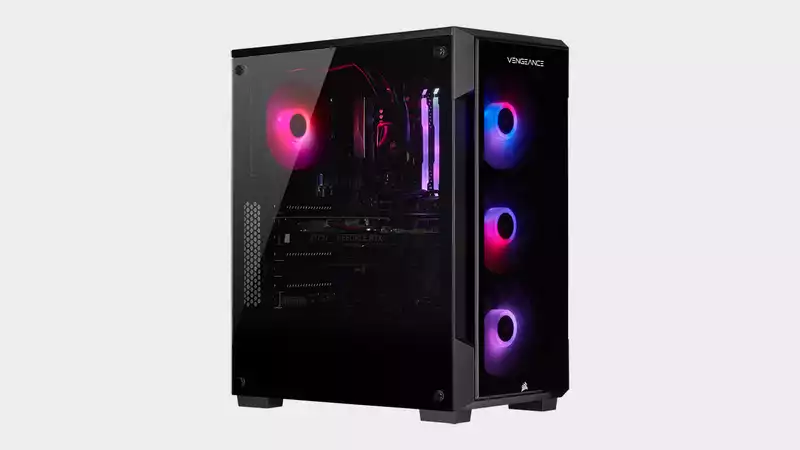The Corsair Vengeance a4100 is part of the latest line of gaming PCs introduced earlier this summer with the i4200 series. This AMD Ryzen-powered system comes pre-installed with an Elgato 4K60 Pro capture card, making it a great option for those looking for a powerful built-in PC for streaming and content creation.
The Corsair Vengeance a4100 build (CS-9030011) we will be checking out sells for about $2000 and includes an AMD Ryzen 7 3700X liquid-cooled CPU, 16GB of RAM, 480GB SSD and 2TB HDD, GeForce RTX 2070 Super. More importantly, what makes this system different from the $1,799 a4100 is that it comes with an Elgato 4k60 Pro Mk.2 integrated capture card, available only with this particular system.
I could eliminate the HDD and replace it with a larger, faster SSD; given the size and load times of popular streaming games like "Call of Duty: Warzone" and "GTA V," I definitely want to run them on an SSD. Additionally, if performance is more important than streaming and you have the money to spare, the Vengeance i4200 with an Intel i7, 32GB, and RTX 2080 Super may be more up your alley.
However, the Corsair a4100 is a nicely built system, comes with a 2-year warranty, and is fairly easy to upgrade; in our long history of testing Corsair products, we have never encountered any major quality issues, and thankfully the a 4100 continues that tradition.
Another big plus for the Vengeance is the case design. The iCue 220T RGB middle tower smart case with tempered glass side panels. Magnetic dust filters on the top, bottom, and front are a godsend considering my workspace constantly generates a lot of dust.
A peek inside is greeted by a quad RGB Pro Fan and RGB from two DDR4 ram sticks. It was strange to see no RGB anywhere in the system. I've always scoffed at colorful systems, but as someone who has become a bit devoted to RGB in recent months, I expected more, given that many streamers like to show off their flashy new PCs.
But why there is no USB Type-C port on the front top panel is beyond me. There is one Type-C port on the back of the motherboard, but that's it. However, the seven standard USB 3.0 ports (nine USB slots in total) gave me enough space to connect many devices, including a key light, microphone, and webcam.
That said, the Vengeance a4100 does not disappoint when it comes to gaming. The system recorded 66 fps on Metro Exodus even with RTX presets turned on; 79 fps on the Total War: Three Kingdoms Battle benchmark; and a total of 15 fps on the Vengeance a4100 with RTX presets turned on.
For streamers looking to capture 4K video from a console or gaming PC, the powerful Elgato 4K60 Pro MK.2 capture card is a great addition. Of course, streaming in 4K will likely never happen given the bandwidth requirements, but creating video content with recorded 4K footage is absolutely possible.
I was surprised that the system could handle 1080p/60fps streams without any major hiccups; I ran the CPU-intensive Facerig app, did a short stream as a virtual black cat playing Metro Exodus, and put a little load on the system It worked quite well. The capture card also upgrades the production value of the stream, meaning you can use your fancy new camera via HDMI if you want to ditch the USB webcam.
If money is no object, the Vengeance a4100 would be perfect for veteran streamers looking to upgrade to a reliable 2-PC streaming setup to offload their main gaming PC, or those with deep pockets just starting out.
For me, the Elgato 4K60 Pro is the perfect 4K capture solution because it allows instant game view and previews gameplay without delay. This is something that the expensive 4K60 S+ external capture card cannot do.
The Corsair Vengeance a4100 is one of my favorite gaming PCs I've gotten this year, and it has everything I need to start streaming comfortably at 1080p and recording killer 4K gameplay. I can stream Twitch streams and It's powerful enough to launch any project on my high-resolution YouTube channel.
.

Comments